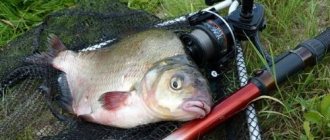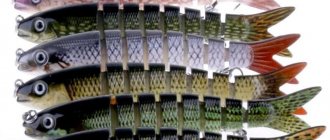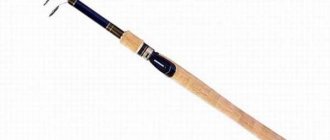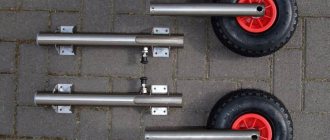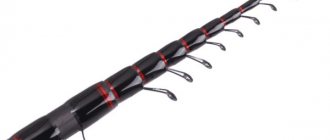Features and functions of thermal socks
My feet are always sweating. And even in the cold. And during intense exercise, sweating becomes even stronger. The fabric of ordinary socks gradually accumulates this sweat, becomes wet and cold, as a result of which the limbs freeze. Thermal underwear works differently.
It does not allow sweat to accumulate - it removes liquid to the outer surface and promotes its evaporation due to the capillary effect. The skin remains dry. These socks are warm in winter and cool in summer, as your feet don’t get sore.
The special weaving of the threads also helps maintain a comfortable temperature: they seem to form pockets in which air heated by body heat is retained.
Thus, the main function of thermal socks is carried out - thermoregulation, i.e. the body’s ability to maintain temperature within certain limits, regardless of environmental conditions.
Thanks to the fact that the skin remains dry, the danger of developing calluses is eliminated (of course, if the shoes are chosen correctly). Wet skin loses its elasticity and is easily injured: a callus can occur even from slight friction.
Now let's figure out why thermal socks may not work and how to avoid it:
- Off-season shoes. Don't expect to wear thermal socks and be able to wear summer sneakers in the snow. Shoes must be appropriate for the weather.
- Wrong shoe size. In tight shoes, blood circulation is impaired and there is no necessary space between the foot and the boot. It is needed to form an air gap. Larger shoes are also not suitable, since the heat generated by the body will quickly dissipate. In this case, the free space inside the boot will be filled with cold air from the street, which means that no thermal socks will help.
- Wearing errors. Any thermal underwear should be worn correctly. Namely, to put it on a naked body. There should not be any tights or tracks under socks, as they interfere with the moisture removal process.
- Inappropriate sock model. In the next section I will tell you that this item of clothing can also be different and the choice depends on the conditions and under what loads you will wear it.
- Some diseases and characteristics of the body. Poor circulation, endocrine diseases, anemia, hypertension, dysfunction of the autonomic nervous system and some other diseases can lead to cold limbs even when all wearing rules are followed. This effect is also observed in freezing people, i.e. those who feel cold even when other people feel quite comfortable.
So if you did not feel the desired result from your high-tech stockings or heard complaints from acquaintances and friends, then you need to exclude the above reasons, and then draw conclusions.
Types of thermal socks
Manufacturers produce a huge number of varieties of thermal socks. Their differences mainly consist in composition, density and type of weaving.
A simple classification involves division only according to seasonality:
- for summer - thin single-layer synthetic products (often have antibacterial properties), providing the highest moisture removal rates;
- for the winter - usually two- or three-layer, where the first layer is designed to wick away sweat, the second warms, and the third (if any) maintains the maximum temperature in severe frosts.
It is more convenient to focus on division by purpose. This way, without going into details, you can understand whether a particular pair is suitable for you or not. If you don’t want to understand the features of each model, then you can simply see for what purposes the creators recommend using their products.
- Everyday wear
Most often designed to keep warm in cold weather. At the same time, they provide a constant temperature when changing places of stay: home, street, office, public transport, etc. Synthetic options with the addition of merino wool are ideal for these purposes.
- Active sports and trekking
The main task here is drainage. After all, during physical activity, the foot sweats very intensely and the fabric of the socks must have time to remove this liquid so that the skin remains dry. The undisputed leader here is synthetic fibers. Special fine-knit channels also help speed up the removal of moisture.
Compression products are ideal for running and alpine skiing. Samples for hiking have reinforcements in the areas of greatest abrasion, do not slip and can even cushion a little when walking. For membrane shoes, thermal socks are a must-have companion. Otherwise there will be no sense from it.
What unites such models is the most anatomical cut, abrasion resistance and the absence of seams.
- Winter fishing and hunting
This type of leisure involves long periods of exposure to low temperatures with minimal activity. This means your socks should be very warm. In most cases, they consist of natural thickened wool with a small admixture of synthetics.
- Hazardous activities
These are products for special services (rescuers, firefighters), but can also be used by extreme tourists. They protect against fire and cuts, are waterproof, but still allow air to pass through.
A special category is made up of children's thermal socks. They also differ by season, but the main requirement for them is hypoallergenicity. Therefore, delicate and thin merino wool is most often used in their production.
Why do you need thermal socks?
Feet sweat, especially during active movements. What happens when feet are exposed to cold conditions, such as in winter? Sweat accumulates, socks absorb moisture, feet get wet and freeze. Wet foot skin becomes less elastic and more susceptible to injury: calluses easily form if friction occurs with shoes.
Therefore, we recommend using thermal socks during the cold season and for active sports. Their main advantage is the function of moisture removal, so your feet do not freeze. That is, thermal underwear protects your feet from wet conditions, preventing them from sweating and freezing. Thermal socks from Doctor TM are intended for sports, tourism, hunting and work, when working in the Far North and other extreme situations.
High-quality women's or men's thermal socks, such as those on our website, unlike ordinary ones, have the following functions:
- Thermoregulation, that is, the ability to maintain the desired temperature, even if the air temperature is too low. The skin remains dry.
- Ventilation. The degree of air circulation is affected by the composition, but any high-quality thermal model provides good ventilation, which is good for the skin.
- Compression for good blood circulation.
Therefore, in our socks you will be warm and comfortable.
Material
Let's figure out what the composition should be. It is this that determines the main properties, strength and how comfortable and pleasant a thing is to wear. And thermal socks are no exception.
They are made from synthetic and natural raw materials, and a mixed composition is usually used. This allows you to level out the shortcomings of each type of raw material (and they all have them) and improve the characteristics of the finished product.
The most common synthetic materials include:
- polyester – soft, lightweight and durable, quickly removes moisture from the surface of the foot;
- nylon (polyamide) – very durable, used to strengthen individual zones, while it does not allow cold air to pass from outside;
- acrylic is an artificial analogue of wool (warm, light, hypoallergenic and tactilely pleasant), but it takes a long time to dry, so it is almost never found in its pure form;
- polypropylene - removes sweat from the skin faster than others, while it itself almost does not absorb it and dries instantly;
- elastane is a very elastic thread that is added to the fabric for the best fit.
These are the general names of the materials from which thermal socks are made. But the fiber itself can be different, even if the same raw material is used. Its structure, type of weaving, thickness and texture differ. So there are specialized synthetic fabrics under their own brands. For example, Coolmax, Lycra, Thermolite, Polartec, Polycolon, etc.
The thickest stockings are not always the warmest. Usually the thickness is increased to soften the load when walking. But if your shoes fit tightly on your feet, then such models will not be suitable.
The list of natural fabrics is more modest:
- Wool – most often it is merino or camel wool. It is very soft, does not cause allergies or irritation, provides good thermal insulation and has antibacterial properties. But unfortunately, it is not highly wear-resistant. The higher the percentage of wool, the warmer it is. But thin summer products are also produced.
- Cotton is breathable, but absorbs moisture and does not evaporate it well. The sock stays wet and your feet get cold. Good only in combination with synthetics.
- Silk is smooth, elastic and absorbs water. Holds temperature well, but wears out quickly.
- Cellulose eucalyptus fibers (Tencel) – have parameters similar to wool.
Thermal socks are exactly the case when natural does not always mean the best. Synthetics often work more efficiently.
Features of the models
Regardless of the brand of thermal socks, clothing can perform several functions:
- Warm your feet in cold weather;
- Quickly remove moisture;
- Provide a pleasant microclimate.
All this is done at the same time, because during physical work the feet begin to release moisture, which subsequently accumulates in the fabric of ordinary socks. For this reason, the thermal insulation properties are reduced, and it becomes easy to get hypothermia. The accumulated moisture will not leave the fabric for a long time; for it to evaporate, a lot of additional energy will be required.
Modern winter thermal socks do not have such shortcomings. They are made from special materials that remove all excess liquid in a short time and dry quickly. Therefore, no heat loss will occur, and the person will experience only comfort. Even if your feet get wet, the chance of getting hypothermia is still minimal.
Summer thermal socks are also on sale. The main purpose of this product is to regulate the balance of temperature that comes from the street with the temperature of the human body. Therefore, the user will not experience any discomfort and can easily run, walk or work.
Size and fit
One of the main conditions for choosing thermal underwear is to correctly determine its size and fit it exactly to your figure. It's the same with thermal socks. They should fit tightly around the limb, but not squeeze it.
- Choosing a larger size than necessary may result in the product not being able to provide its moisture-wicking properties. The loose fit will prevent the fabric from absorbing sweat and it will simply sit on the skin. In addition, such a sock will slip and form wrinkles and, because of this, can rub.
- A smaller size will also not be suitable, since the leg will be compressed and blood will not be able to circulate normally. Even too much tension in the fabric will prevent the formation of air pockets that provide thermal insulation.
If you are choosing socks for a hike, make sure that their height is greater than the height of the top of your boots. Otherwise, the tongue of the shoes will rub exposed skin.
Manufacturers of socks for professionals pay great attention to fit. The difference in the anatomy of female and male legs is taken into account, and special models are produced taking into account the width of the foot and even the position of the calf muscles.
It would be nice to try on socks before purchasing, but rarely do any sellers allow you to do this. Therefore, be guided by the size range and the values indicated there.
How moisture-wicking fabric works
The principle of operation of moisture-wicking fabric can be explained using the example of a conventional gasoline lighter. Gasoline rises up the wick, where it evaporates and burns. The rise of gasoline into the combustion zone occurs under the action of capillary forces.
A similar effect occurs in two-layer synthetic fabrics:
- a person's feet begin to secrete sweat
- under the influence of body temperature, sweat begins to evaporate and, due to the temperature difference between the surface of the skin and socks, condenses on the inner surface of the fabric
- under the action of capillary forces, sweat begins to rise into the upper layer of the fabric. There is practically no absorption of moisture into the fibers due to the very structure of the material, which is essentially plastic
- moisture evaporates from the surface layer of the fabric due to the fact that the air in the shoes has lower humidity than the air directly in the socks
To improve the moisture-wicking properties of fabric, the following technological methods are used:
Material design
Changing the structure of the material, giving it roughness allows moisture to be transported from the inner layers much faster
Chemical processing of material
Special treatment of fabrics with chemicals makes it possible to reduce the hydrophilic properties of polyester to a minimum of 0.4%, while the hydrophilicity of cotton is 7%.
Moisture wicking from wool
It is believed that wool fibers do not have a capillary effect. But moisture removal still occurs. Wool fibers have a high hydrophilicity of about 30%.
Then the moisture moves towards the surface with less humidity - into the surface layers and evaporates from there. Wool fibers do not absorb moisture because they are coated with a waxy substance called lanolin.
Weaving
Take a closer look at the pair of socks you like. This will help you find out what technology was used to make the item.
- continuous knitting - implies continuous weaving, in which the material has the same thickness and texture everywhere;
- zonal knitting - involves a combination of different technologies.
Zonal knitting allows you to increase wear resistance and, most importantly, provide protection for vulnerable areas during periods of increased stress: during sports or long walking.
Particularly common is the strengthening of areas prone to abrasion: heels, insteps, toes. In addition, it protects against calluses.
Seams are among the most problematic areas. They are the ones who most often rub their feet. Choose options that have flat seams, preferably located on the outside.
Particular attention should be paid to the so-called compression products. They provide several advantages:
- improve blood circulation, which means reduce fatigue and swelling;
- reduce pain due to the tightening effect and reduction of vibrations when touching the ground;
- protect against injury because they form a flexible skeleton for muscles and tendons;
- relieve tension and speed up the recovery process after exercise.
However, in everyday life a healthy person does not need such features. Such models are common among those who engage in running and skiing.
How to choose thermal socks?
Such a wardrobe item as women's thermal socks for the winter is represented by an extraordinary variety of models:
- When choosing the appropriate option, you need to look for things made of synthetic fibers, for example, acrylic, nylon and others. A combination of synthetic fibers with natural ones (cotton, sheep wool or alpaca wool) is also allowed.
- Attention should be paid to the fit of the sock on the foot. It should not be too big, otherwise it will move and gather in unpleasant folds inside the boot. The sock should not fit too tightly. In this case, it interferes with the natural dynamics of the foot during movement. The sock should fit snugly around the heel.
- When buying women's thermal socks with reinforcement in high-stress areas, it is worth remembering that they are thick, so the shoes should have a sufficient margin of size. But models with seams should be discarded immediately, because they will create problems and abrasions.
- High-quality thermal socks, especially those designed for trekking and mountain hiking, are expensive. But they are more durable and functional than regular budget options.
Heated thermal socks
Those whose feet are always cold are advised to pay attention to the special composition of heated thermal socks:
- An excellent solution would be Blazewear heated merino wool socks. The power source can be standard or rechargeable AA batteries, polymer batteries.
- Thermal socks have two heating modes: maximum, when the indicator lights up red, and economy, when it lights up green.
Thermal socks for snowboarding
When deciding how to choose thermal socks for the winter, a special approach requires the selection of products intended for snowboarding. They are also suitable for skiing:
- Thermal socks have an insert in the areas of the shins and soles. They provide protection for the feet and shins from hard contact points.
- The main properties are waterproof and windproof, but the socks also retain heat well.
Thermal socks for everyday wear
Choosing the best thermal socks for everyday wear is not particularly difficult. The products are characterized by the following distinctive features:
- The composition of the products is combined, synthetic fibers plus merino wool.
- Thermal socks are lightweight and medium thick. They have good heat-saving functions, but slightly reduced moisture absorption.
Thermal socks for sports
There is an extremely wide range of thermal socks for running or other active sports:
- There are products for hiking that are distinguished by reinforcement in the heel, instep and toe areas. They are made of high-tech material. Thermal socks fit the foot tightly, have high tear resistance and will last a long time.
- There is a bicycle line, these are things that should be worn during prolonged physical activity. The advantages of such thermal socks are comfort and convenience, optimal fit and lack of friction between the skin and the fabric. Bicycle thermal socks are made of synthetic material with high moisture-wicking functions. The product stretches in the ankle area, so the blood flow to the feet is not blocked.
- Thermal socks are also designed for running. They are presented in two types: uniform over the entire surface and with different thicknesses. The second model has reinforcements in the heel and instep areas, thereby reducing the load on the foot.
- Those who walk can choose special thermal socks. They are distinguished by their small thickness and additional moisture-absorbing inserts. No matter how intense the workout, your feet will remain dry.
- Multisport thermal socks have been created for the gym, running and cross-trekking. They have a reduced insulation layer and inserts for shock absorption. At the same time, there are moisture absorption functions.
Manufacturers
As a rule, thermal underwear manufacturers also produce related accessories, including thermal socks. For example, brands such as Norveg, Craft, Norfin, Guahoo.
But there are also brands for which the production of this wardrobe item is their main activity. Here is a list of the best brands whose products have many positive reviews and recommendations:
- Lorpen is an Italian company that is a recognized professional in the production of socks for skiing, trekking and running.
- Mund is a high-tech Spanish brand. It has a wide range for both cold and warm weather. The main specialization is sports and tracking models.
- Rohner is a Swiss brand that produces high-quality sports and functional socks.
- X-Socks is a subsidiary of X-Bionic. Engaged in the development and manufacture of high-tech options of exceptional quality for various types of activities.
- Mico began its history as a manufacturer of hosiery, but now the range also includes underwear and other accessories.
- Bridgedale is a company from Ireland whose products are distinguished by excellent quality and comfort.
Caring for thermal socks
In order for socks to serve for a long time and perform their functions properly, it is not enough to wear them correctly. It is also necessary to properly care for them. The main nuances of care coincide with the rules for washing thermal underwear. I will list the main ones:
- Before washing, you should turn the thermal socks inside out. This is done to ensure that the inner surface of the fabric is cleaned of organic contaminants that clog the fibers.
- They must be washed by hand using liquid detergents for synthetics or wool (depending on the composition). Machine washable on delicate cycle. The water temperature should not exceed 30–40 degrees.
- After washing, leave the socks in the sink and let the water drain. You can gently squeeze out the excess liquid with your hands. It is forbidden to forcefully twist clothes or use a spin cycle in the washing machine. This damages delicate threads, leading to deformation and loss of properties.
- It is advisable to dry the products horizontally and unfolded, away from heating devices and direct sunlight.
- If pellets form on the surface after wearing, you can carefully remove them with your hands. But you need to use the machine to remove pellets with extreme caution: it can damage the canvas.
Even the most wear-resistant options will not last long if worn constantly, so it is better to buy 2-3 pairs at once.
How to choose the right thermal socks (trekking socks )
Before a hike, we usually prepare thoroughly - we collect equipment . Often tourists, having spent considerable sums on purchasing a jacket , pants, boots, completely forget about such an important detail as socks . And they save on it. But in vain - after all, you need to remember that a lot on the hike will depend on the condition of your feet - no matter how good your boots , if your socks are uncomfortable or of poor quality, problems with your legs and feet cannot be avoided. If your feet are constantly wet, this can quickly lead to chafing and the formation of calluses, which means excruciating pain and sometimes the inability to move further.
The best option for a hike would be thermal socks or trekking socks . Don't let the prefix "thermo" fool you. Not all of these socks are designed solely to keep your feet warm in cold weather. Trekking socks are a type of thermal underwear; they are an important part of the base layer of clothing, which is in direct contact with the skin and allows it to breathe while wicking away excess moisture.
Why are trekking socks so good? Thermal socks have reinforced areas of the foot, heel, toe and instep. They do not slip and are more durable. Thermal socks allow you to control the temperature of your feet, reduce friction when walking and do not absorb odor.
If your hiking shoes
Even if you go in regular ankle boots or sneakers, you can feel the benefits of thermal socks trip Don't let their price put you off, they're worth it. Moreover, the market offers both expensive and quite affordable models.
Basic requirements for trekking socks
- They should be comfortable
- They must be the exact size of your feet.
- They should wick moisture away from the skin well
- They must take into account the weather conditions in which they will be worn.
- They must be suitable for the type of activity for which you are purchasing them.
- They should have seams only on the outside
- They should ideally have an anatomical shape, i.e. marked “right”, “left”.
Types of thermal socks There are no universal socks for all occasions, and you will need several different pairs both on a hike and in the city. Depending on the type of activity, thermal socks can be divided into:
- For gym workouts
- For winter sports
- For tourism/travel
- On every day
Thermal socks materials
The materials of thermal socks are very similar to the materials of thermal underwear.
Depending on their purpose, thermal socks most often consist of a combination of several materials that perform different tasks: heating, removing moisture, providing strength and softness. There are also materials that provide antibacterial protection (elimination of unpleasant odors). In winter , the most popular are thermal socks , which contain wool from Merino sheep . They have antibacterial properties, remove moisture well and retain heat at the same time. Socks with Primaloft have very good thermal properties, which are used in difficult conditions. In summer , the main material for trekking socks is CoolMax. This fiber has a hollow structure and is excellent at wicking away moisture, keeping your feet dry.
On the labels you can also read the following inscriptions: Outlast (temperature regulation), Coolmax (wicks away moisture, dries quickly, cools the body), Lycra (elasticity and comfort), Cordura (durability), Kevlar (durability and effective protection of the ankle from damage), Thermolite (retains body heat), Polycolon (removes moisture, dries quickly, protects against bacteria), Modal (synthetic analogue of silk, comfort), various types of Polartec (heat retention, moisture removal, comfort, dries quickly), Elastan, Poliamide, Polyster and natural fibers - Merino wool , Lama wool , RHOVYL'Coton and RHOVYL'Laine, White cotton .
DexShell waterproof socks
Recently, socks that remain dry even if your shoes are completely wet are gaining popularity. These are three-layer waterproof socks from DexShell . Outside and inside they have protective layers of different compositions. Between them is a functional layer ( membrane ), which is responsible for the waterproof and sweat-wicking abilities of the sock. Probably not everyone is willing to pay about $30 for a pair of these socks, but if you care about your health and comfort, then they will be an excellent addition to your shoes in the most difficult hiking conditions.
Caring for thermal socks
Caring for trekking socks is approximately the same as for other thermal underwear. Can be washed in a washing machine on a gentle cycle or by hand with soap. Bleach and washing powders, dry cleaning are not allowed. squeeze thermal socks . Ironing or drying on radiators or heaters is strictly contraindicated - excessive heating will destroy the unique properties of the fabric.

